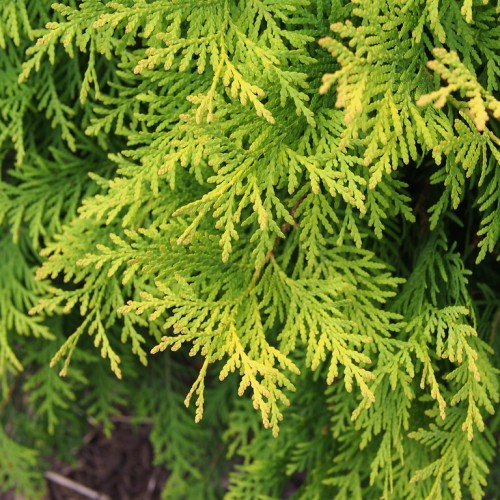
oriental arborvitae
Platycladus orientalis 'Aurea Nana'
Also Known As - oriental arborvitaeCycle:
Perennial
Watering:
Average
Hardiness Zone:
6 - 9
Flowers:
Flowers
Sun:
Full sun,part shade
Cones:
Yes
Leaf:
Yes
Growth Rate:
Low
Maintenance:
Moderate
Drought Tolerant:
Yes
Care Level:
Moderate
watering
This plant prefers moist but well-drained soil and should be given a deep watering once or twice a week depending on soil type, weather, and other factors. If the soil is particularly sandy it may require significantly more watering, whereas clay soils can hold on to moisture for longer periods and will need less frequent waterings. During dry spells, it may be necessary to increase watering, as the Oriental Arborvitae is not considered drought-tolerant. In periods of extreme heat, the plant should be watered more often and given more shade.water should be applied at the base of the tree and enough should be applied so that the soil is completely saturated.
sunlight
Oriental arborvitae (Platycladus orientalis 'Aurea Nana') is a small- to medium-sized coniferous evergreen tree that requires a moderate amount of sunlight for optimal growth. It prefers full sun but will also tolerate some shade and can take advantage of some light dappled shade to keep its foliage brighter. In general, it should be exposed to full sun for at least 6-8 hours a day during part of the year, preferably in the morning or afternoon hours. In areas where summer temperatures are hot, providing some afternoon shade is especially important. Make sure to place the Oriental arborvitae in an area that receives at least 4-6 hours of direct sunlight per day and as much indirect sunlight as possible.
pruning
Oriental arborvitae (Platycladus orientalis 'Aurea Nana') should be pruned annually in early Spring to maintain its desired form and density. Pruning should be light and done before the plant begins new growth in the spring. Remove only a few of the longest growing shoot tips using sharp pruning shears or clippers, cutting just above a leaf node. This pruning will encourage a dense and bushier form. Dead or diseased branches should be removed as needed. Avoid pruning too heavily, and do not prune into the old wood as this may damage or injure the plant.
